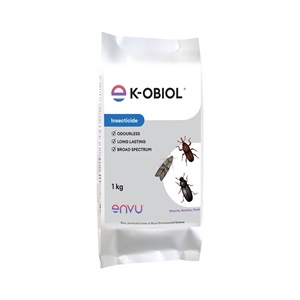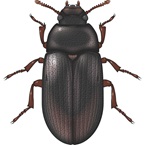Scientific name: Sitophilus granarius
Family: Curculionidae
Description
There are 3 different species:
- Sitophilus granarius (Grain Weevil)
- Sitophilus oryzae (Rice weevil)
- Sitophilus zeamais (Maize Weevil)
Each of these species varies considerably in size but has a distinctive elongated snout which is adapted to the size of its preferred grain. Typically, they reach 2-4mm in length and have a long cylindrical body which is dark brown or nearly black in colour.
Grain weevils are encountered in all temperate and warm-temperate climates. They are widely distributed around Europe. Both adults and larvae are cold-hardy.
Rice and Maize weevils are widely distributed in tropical and sub-tropical areas and will be carried to temperate areas on imported commodities.
The maize weevil breeds on maize in the field but the Rice weevil only breeds in stored grain. Both insects will not normally overwinter in unheated premises or grain stored at normal temperatures.
Behaviour
Grain weevils do not fly but instead, infestations often occur after being imported in grain and cereal products, also from the fabric of vehicles used to transport grain or buildings to store it.
The female will lay a single egg inside the grain, where larva and pupa stages will occur, once developed, the weevil bores its way out leaving a hole in the grain.
The Grain weevil can only breed in grain with moisture content of more than 9.5% and at temperature within the range 13-35C.
Risks
Grain weevils are primary grain pests, infesting undamaged grain and attacking other hard cereal products such as macaroni and spaghetti. Weevil-damaged grain is readily recognised by the presence of large holes which are the exit holes of the emerging adults.
Both the adults and the larvae feed on the grain causing holes and also contamination with their excretions. Grain quality and marketability is reduced.











